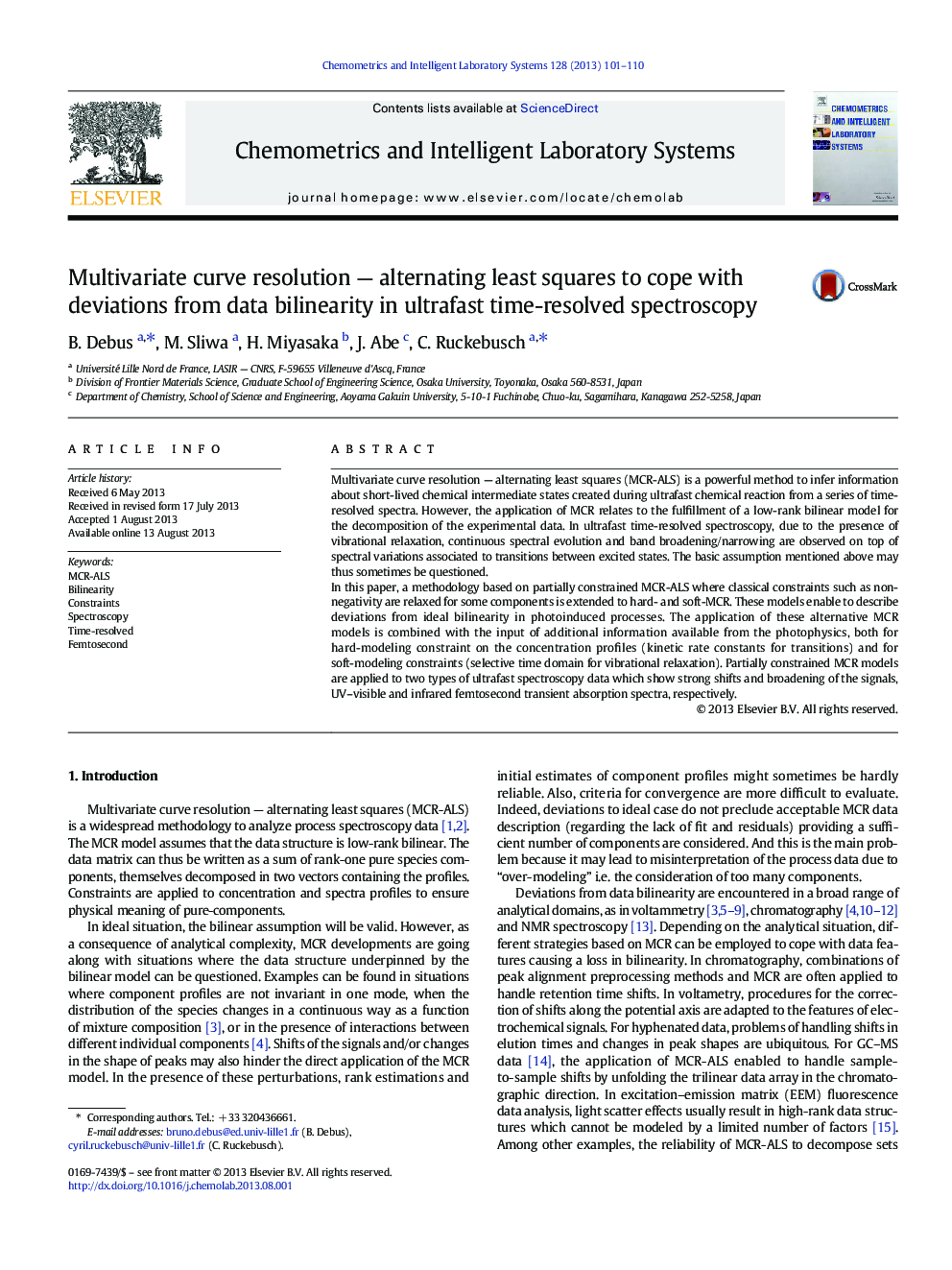| کد مقاله | کد نشریه | سال انتشار | مقاله انگلیسی | نسخه تمام متن |
|---|---|---|---|---|
| 1181018 | 1491550 | 2013 | 10 صفحه PDF | دانلود رایگان |

• Partially constrained MCR-ALS extended to hybrid hard- and soft-MCR models
• Off-process components left unconstrained to accommodate spectral shift/narrowing
• Band integral information to detect and localize non-bilinear signals
• Application to challenging femtosecond time-resolved spectroscopy data
Multivariate curve resolution — alternating least squares (MCR-ALS) is a powerful method to infer information about short-lived chemical intermediate states created during ultrafast chemical reaction from a series of time-resolved spectra. However, the application of MCR relates to the fulfillment of a low-rank bilinear model for the decomposition of the experimental data. In ultrafast time-resolved spectroscopy, due to the presence of vibrational relaxation, continuous spectral evolution and band broadening/narrowing are observed on top of spectral variations associated to transitions between excited states. The basic assumption mentioned above may thus sometimes be questioned.In this paper, a methodology based on partially constrained MCR-ALS where classical constraints such as non-negativity are relaxed for some components is extended to hard- and soft-MCR. These models enable to describe deviations from ideal bilinearity in photoinduced processes. The application of these alternative MCR models is combined with the input of additional information available from the photophysics, both for hard-modeling constraint on the concentration profiles (kinetic rate constants for transitions) and for soft-modeling constraints (selective time domain for vibrational relaxation). Partially constrained MCR models are applied to two types of ultrafast spectroscopy data which show strong shifts and broadening of the signals, UV–visible and infrared femtosecond transient absorption spectra, respectively.
Journal: Chemometrics and Intelligent Laboratory Systems - Volume 128, 15 October 2013, Pages 101–110